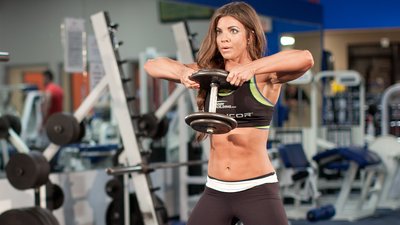Congratulations. With all the attention you've paid to building up your pecs, your front delts are probably quite jacked. And to further the illusion of a small waist, you're probably doing all kinds of middle-delt moves too.
Anything missing? Yeah, buddy. Your rear delts—the ones you can't see in the mirror—are so underdeveloped that you'd a need a microscope to spot them.
Alas, imbalance among the three deltoid heads can lead to significant rotator cuff problems down the road. And those big front caps are likely pulling your shoulders forward, which is perfect if you want to have bad posture and walk like a caveman.
Ready for an intervention? To start, you're going to have to abandon the what-you-can't-see-in-the-mirror-can't-hurt-you school of training. You'll need to start adding dedicated rear-deltoid exercises and make strategic decisions about how to beef them up. Whether it's a stubborn area by nature or just lack of training, these eight tips will help you balance and prioritize your delts.
1. Do Rear Delts After Back Training That Consists Of Lots Of Rows
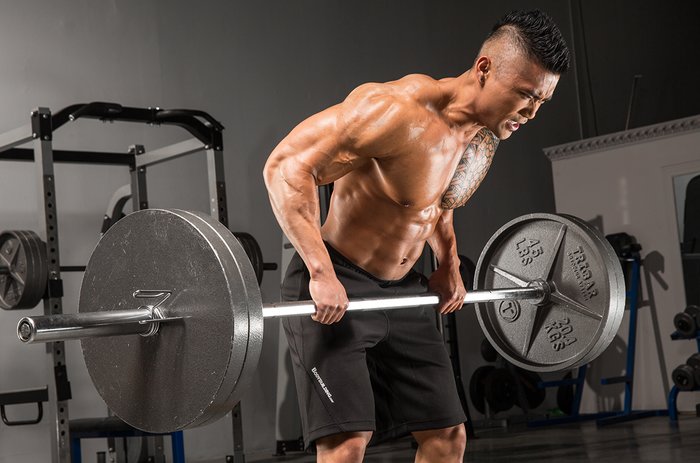
This is one of those items top-level bodybuilders know about but few less-experienced bodybuilders understand because oftentimes they're so preoccupied with segmenting workouts purely by body part. It's important to know that many back exercises—particularly rows—actively engage the rear delts, just as chest training pulls in the front delts and triceps, back training recruits the biceps, some shoulder exercises work the upper traps, and other back exercises work the lower and middle traps.
Think about how you do reverse flyes on the pec deck machine. Now bend over; this motion isn't dissimilar to how you do bent-over rows or T-bar rows supported against a bench. They hit the middle traps, rhomboids and rear delts quite well. That's why it's important to remember that many exercises—especially multijoint ones—are lousy at isolating particular muscle groups. Multijoint exercises recruit a number of secondary, assistance muscles. And many rowing motions do just that with the rear delts.
Your rear delts are already getting a heckuva workout on back day. So why not add one or two dedicated rear-delt exercises at the end of your back workout to finish the job? Many top bodybuilders already use this approach.
If you're doing back and shoulders on consecutive days in the gym, you're probably not giving your rear delts enough rest between workouts. You'll want to separate those training days by at least 48 hours.
2. Train Rear Delts Twice Over The Course Of Your Training Split
You can also double up your rear-delt workouts—not your entire shoulder workouts—over the course of your training split. As long as you work enough rest days in and pay attention not to train back and shoulders on consecutive days, this approach can work because the rear delt isn't a particularly large head.
Rather than duplicating the rear-delt exercises you do in each of your workouts, the better approach would be to vary them. In addition to exercise choice and equipment, you can create variety through rep ranges, intensity-boosting techniques, volume ranges, and rest periods. For optimal results, try manipulating several variables so that the rear delts are being worked in multiple ways.
3. Prioritize Rear Delts On Shoulder Day Among The Three Delt Heads
The delt head that you work first, when your energy levels are highest, is the one that will improve the fastest. Now, I'm not asking you to ditch that classic opener, the overhead press. But because that exercise does a much better job building the front and middle delts—depending on whether you lower the bar in front of or behind your head—you need to hit your rear delts immediately after to bring them up.
One option is to do a rear-delt single-joint isolation exercise before working the middle and front delts. Tis way, the rear delts get the priority among the single-joint movements after you do your presses.
Another alternative is to take a pre-exhaust-like approach and do a single-joint rear-delt move first, before the multijoint pressing move. You might sacrifice a bit of strength on your presses but you'll be plenty strong to attack those rear delts right off the bat.
Training Tip: Like all single-joint straight-arm raises involving the delts, keeping your elbow locked with a very slight bend throughout the range of motion is critical. On movements like standing cable reverse flyes, many lifters extend their elbows as they press the handles away, but that turns the movement into a triceps exercise. Practice locking a slight bend in your elbows and holding it there. If you're still having trouble, do the movement on the pec deck machine, which better locks your elbows in the correct position.
4. Choose A Solid Mass-Builder With Challenging Weights
Single-joint exercises are not, by nature, the best mass-builders, but you can at least use the best of the batch. The bent-over dumbbell lateral raise, which generates a bit of momentum through your lower body, is one of your best options.
You also need to pick the right rep range. Never go too heavy with single-joint exercises, as they can put undue pressure on a joint. Choosing a weight at which you fail on the lower side of the 8-10-rep range is a solid muscle-building option. Just make sure you take each set to muscle failure—the point at which you can't complete any more reps using good form.
5. Do A Second Rear-Delt Exercise Later In Your Workout
No law limits you to just a single isolation movement for rear delts, so hit 'em again in the same workout. You just don't want to work them in the exact same manner, so choice of equipment and rep target become important.
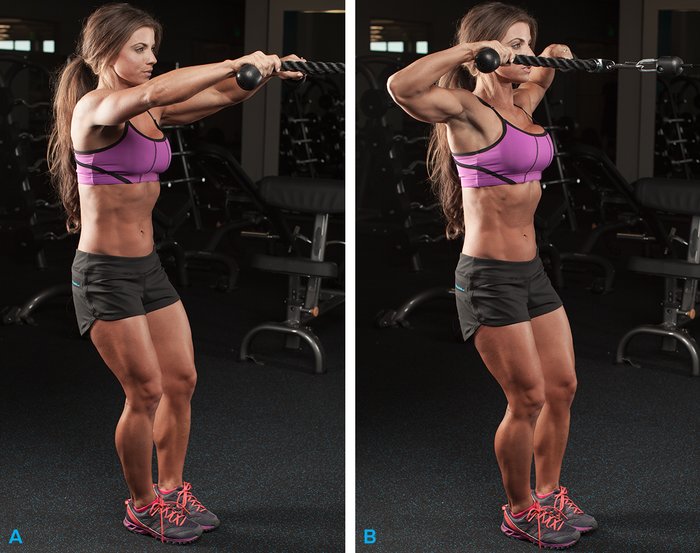
Face Pull
If you did bent-over lateral raises with dumbbells first, try standing cable reverse flyes or high pulls on the cable. To work the target musculature in a slightly different manner, pick a weight that you can do for 10-12 reps instead.
Working the rear delts at more than one angle and one relative intensity will produce more growth.
The Rear-Delt Hit List
Multijoint Exercises
- Most rowing movements
- Face pull (with rope)
Single-Joint Exercises
- Reverse Pec deck machine
- Rear delt machine
- Standing cable reverse fly
- One-arm bent-over cable lateral raise
- Bent-over dumbbell lateral raise
- Incline bench bent-over dumbbell lateral raise
- Head-supported bent-over dumbbell lateral raise
- Seated bent-over lateral raise
6. Incorporate New Rear-Delt Movements
If you've got only one or two go-to rear-delt exercises in your gym bag, it's time for a bigger bag. Learning new movements can instill a novel stimulus and jump-start growth. Rear delts can typically be isolated with machines, cables and dumbbells. Unilateral (one-arm) versions allow greater range of motion and intensity. Get creative.
Consider the various ways a bent-over lateral raise can be done:
- With dumbbells while standing in the bent-over position
- Seated on a flat bench
- With your head pressed into a bench to reduce body English
- On an incline bench set to about 60 degrees
- One arm at a time on a cable.
Face pulls on the cable with a rope are another seldom-used rear-delt move.
Also consider making slight adjustments to your existing exercises. Changing the angle of pull on cable exercises is as easy as moving the pin, and it allows you to slightly alter the recruitment pattern among the muscle fibers.
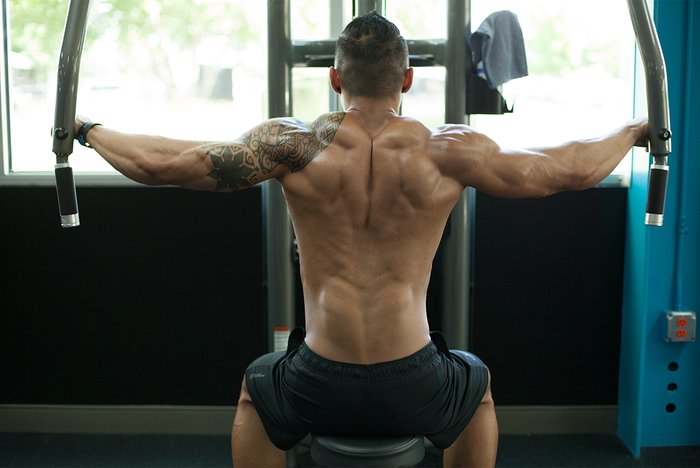
Learning new movements can instill a novel stimulus and jump-start growth. Rear delts can typically be isolated with machines, cables and dumbbells.
7. Dial Up The Intensity With Advanced Techniques
As mentioned, taking your sets to muscle failure is an important aspect of building muscle size; going 1-2 sets past failure can really set you up for growth. Here are a few advanced training techniques that work especially well with rear-delt movements:
- Forced Reps: Best done with reverse flyes on the pec deck machine with your partner standing behind you, giving you just enough help when you hit the sticking point to get another few reps.
- Dropsets: Really easy to do with dumbbells, machines, or any cable exercise. Simply reduce the weight by about 25% when you reach muscle failure, and immediately resume the set, working to a second point of muscle failure.
- Supersets: Two rear-delt movements back-to-back with minimal rest between exercises. Rest only after you complete both movements.
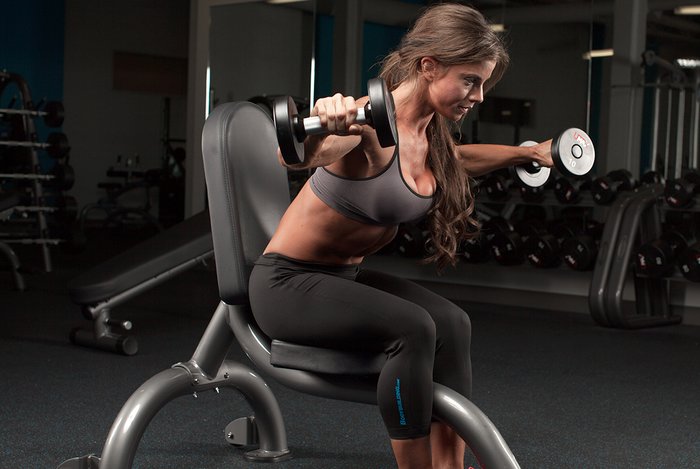
8. Finish With A Bang
You always want to finish your workout—no matter the body part—feeling you gave it your all, leaving nothing in your tank. Some of these advanced techniques might do just that, but don't be afraid to experiment, and by all means don't be afraid to find out what works great for other lifters. If nothing else, you can get plenty of ideas from BodySpace users and the many articles on Bodybuilding.com.
Here's a rear-delt finisher that's super-intense: Grab a pair of dumbbells and sit at the end of a flat bench. Bend over and complete a set of seated bent-over lateral raises to failure (adjust the weight so that you reach failure at about 10 reps). But instead of ending your set here, you're going to now introduce a bit of body English to enable you to continue the set. Immediately get off the bench and do the same exercise from the standing, bent-over position. Because you're able to generate a bit of momentum through your knees and hips, you can keep the set going, intensifying the burn. Do as many as you can. If you still want to up the ante, by all means add a dropset to the end of that.
So go ahead: Pick and choose among these strategies to boost your rear-delt development. Now you've got no excuses.



